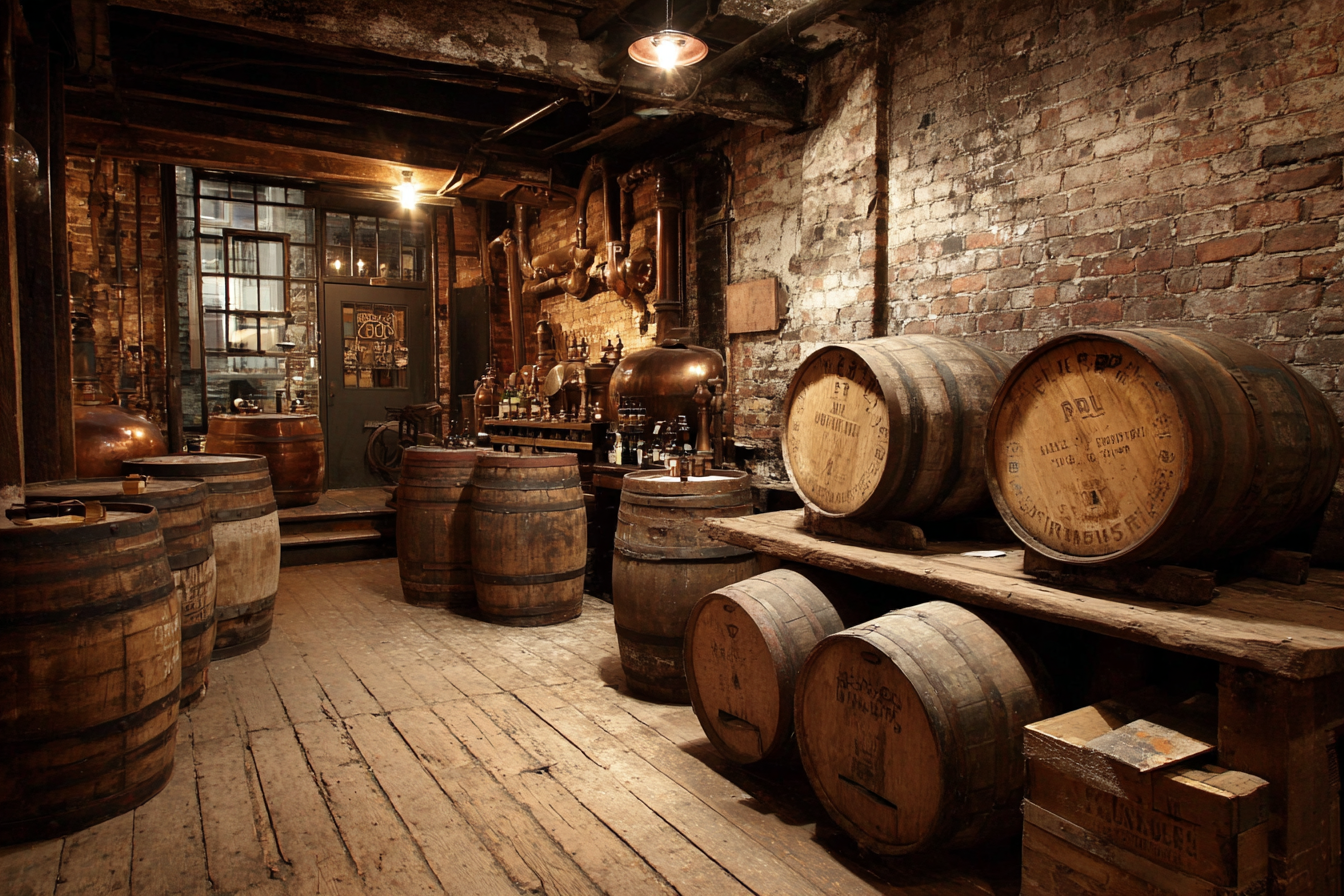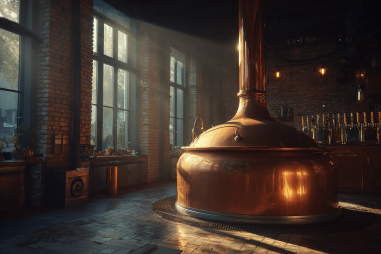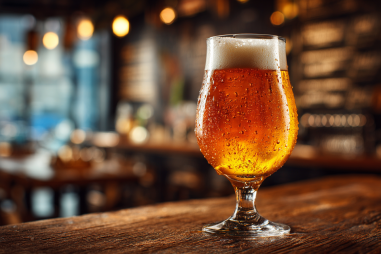American wild beer has emerged as a fascinating and flavorful segment of the craft beer landscape, capturing the imagination of beer enthusiasts with its distinctive complexity and rich history. Unlike typical ales and lagers, wild beers are crafted with the involvement of wild yeast strains and bacteria, often resulting in sour, funky, and unpredictable flavor profiles. This unique style owes its roots to early American settlers and indigenous ingredients, evolving dramatically through the centuries to become a beacon of innovation within the craft beer movement today. Let’s take a journey through the origins and rich history of American wild beer, from spontaneous fermentations to modern wild fermentations that push the boundaries of brewing art and science.
Early Influences on Wild Beer in America
The story of American wild beer begins with the earliest European settlers and indigenous peoples who inhabited North America well before the rise of commercial brewing. Breaking away from the more controlled and traditional European brewing methods, early settlers often relied on spontaneous fermentation—a natural process in which wild microorganisms present in the environment ferment the beer. This method was common in Europe’s rural brewing traditions too, especially in Belgian lambics, which greatly influenced wild brewing principles.
Early colonists did not have access to the same controlled yeast strains that modern brewers use today, so they embraced whatever wild yeasts and bacteria were available in the local air, water, and ingredients. This reliance on spontaneous fermentation created distinctive beers that were often sour and funky, much different from the standard ales and lagers. Through this, the foundations for American wild beer were established, characterized by a connection to nature and seasonal variation.
Traditional Methods and Indigenous Ingredients
Integral to the origins of wild beer are traditional brewing methods and the use of indigenous ingredients, which helped define the flavors and character of early American wild beers. Native American tribes had extensive knowledge of local grains, plants, and fermentation techniques, some of which intersected with settler brewing practices.
Wild beer production often incorporated locally foraged ingredients like:
- Wild berries and fruits
- Local grains such as maize (corn), barley, and rye
- Herbs, roots, and spices endemic to various regions
These elements were essential not only for flavor but also for introducing diverse microbial populations—wild yeast and bacteria—falling naturally from the environment during brewing and fermentation. The mash tuns and wooden barrels used were often home to resident yeast colonies, enhancing the beer’s wild character with each batch.
Impact of Spontaneous Fermentation in American Brewing
Spontaneous fermentation is at the heart of wild beer and describes a process where brewers leave the wort exposed to native airborne yeast and bacteria rather than pitching a pure strain of cultivated yeast. This method was naturally embraced in America due to the lack of commercial yeast availability and a strong connection to localized terroirs.
American brewers discovered that spontaneous fermentations produced highly complex and unusual flavors ranging from tart and sour notes to barnyard funkiness, often associated with Brettanomyces and Lactobacillus bacteria. This process was both unpredictable and serendipitous, fostering an early appreciation for microbial diversity in beer brewing.
However, the industrialization of brewing in the 19th and 20th centuries led to a decline in these traditional methods. Controlled fermentation with pure yeast strains became the norm to produce consistent-tasting beers. This shift temporarily obscured the art and heritage of wild beer until a revival decades later.
Evolution Through the Craft Beer Revolution
The American craft beer revolution, starting in the late 20th century, transformed the brewing landscape and rekindled interest in traditional and wild brewing techniques. Brewers began to experiment with spontaneous and mixed fermentation once again, inspired by Europe’s lambics, gueuzes, and sours.
This period marked a renaissance for American wild beer. Craft brewers sought to push boundaries by rediscovering the terroir of their local yeast strains and embracing bacteria in their brewing processes. Barrel aging, blending, and the use of native fruits became popular ways to create complex wild beer profiles.
Key factors contributing to this evolution included:
- Greater access to detailed brewing knowledge and microbiology
- Technological advancements in brewing equipment
- A growing community of adventurous beer drinkers seeking sour and funky flavors
- Small-batch experimentation and farm-to-table artisanal ethos
Notable Breweries and Pioneers in American Wild Beer
Several breweries across the country played instrumental roles in shaping American wild beer culture. Their passion for spontaneous and mixed fermentation elevated wild beer from a niche curiosity to a celebrated craft category.
Some of the pioneers include:
- Jolly Pumpkin Artisan Ales — Based in Michigan, they are known for their use of wild yeast and barrel-aging techniques that produce uniquely tart and earthy beers.
- Bruery Terreux — In California, this branch of The Bruery specializes in wild and sour ales, experimenting with native microbes and creative blends.
- Wicked Weed Brewing — Located in North Carolina, Wicked Weed helped popularize wild and sour styles through their Funkatorium, a dedicated sour and wild fermentation facility.
- Allagash Brewing Company — A Maine brewery famous for pioneering American versions of Belgian-style sour beers, including spontaneous fermentation projects.
These breweries, among others, influenced countless brewers and contributed to the growing appreciation for the artistic and scientific balance required in wild beer production.
Modern Trends and Innovation in Wild Beer
Today, American wild beer is experiencing a vibrant wave of creativity and innovation, influenced by new brewing techniques, microbiological research, and evolving consumer preferences. Brewers now have more tools than ever to control and manipulate wild fermentations while preserving their natural complexity.
Current trends include:
- Microbial experimentation: Isolating and cultivating unique yeast and bacterial strains from local environments to create regionally expressive beers.
- Mixed fermentation blends: Combining beers fermented with different microbes to balance acidity, funk, and yeast character.
- Farmhouse and mixed-culture ales: Brews that embrace rustic, farmhouse traditions blending homage to the past with a modern twist.
- Collaboration brews: Breweries working together to share knowledge and push the boundaries of wild beer styles.
- Increased use of local and foraged ingredients: Reinforcing sustainability and authenticity in flavor.
As more brewers invest in dedicated wild fermentation spaces, like coolships and barrel rooms, the diversity and sophistication of American wild beer continue to grow, attracting both long-time aficionados and curious newcomers alike.
Honoring Tradition While Embracing Innovation
The story of American wild beer is one of both preservation and progress. It bridges centuries of brewing heritage—from the simple, spontaneous ferments of early settlers and indigenous peoples to the carefully crafted, experimental beers of the modern craft scene.
By understanding and respecting traditional methods and indigenous ingredients, brewers today maintain a connection to the past. At the same time, ongoing innovation ensures that wild beer remains an exciting and evolving style, capable of surprising and delighting beer lovers worldwide.
Ultimately, American wild beer’s history and origins remind us of the enduring relationship between nature, culture, and creativity, inviting us all to explore the wild side of brewing with an open mind and eager palate.







